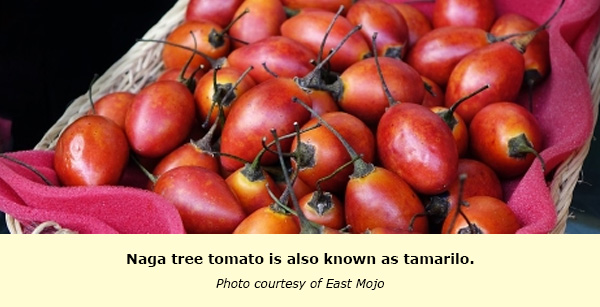The North Eastern Regional Agricultural Marketing Corporation Limited (NERAMAC) on Friday organised a workshop on ‘Post GI Activities for Naga Tree Tomato and registration for Authorized Users’ in Kohima under the aegis of the ministry of development of north eastern region (DoNER).

The workshop conducted with the aim of creating awareness among the farmers about the usage of Geographical Indication (GI) registration and legal rights adhering to it, was attended by hundreds of Naga farmers.
The Naga tree tomatoes are locally known as ‘Sei Bangenuo’ — the name is a derivation from the Tenyidie dialect which translates to ‘tree tomato’. The fruit looks a lot like tomato, but bears an egg-like shape. With over 30 species around the world, the Naga tree tomato is also called ‘tamarillo’. It was given the GI number 374 between April 2014 and March 2015.
A GI is a name or sign used on certain products which corresponds with a specific geographical location or origin. The GI tag ensures that none other than those registered as authorised users (or at least those residing inside the geographic territory) are allowed to use the popular product name. Darjeeling tea became the first GI tagged product in India, in 2004-05.
At the workshop, farmers were taught the art of tomato tree plantations, and later registered themselves as ‘authorised users’ to further contribute and enhance in the production and commercialisation of the Naga indigenous crop into the market outside the state.
MK Mero, principal secretary, department of horticulture, highlighted the importance of GI-tagged items at the workshop. He spoke how it maintains the originality of a product and urged the need to develop and register more local items as, Nagaland has only three items with GI tag, namely Naga Mircha, Naga tree tomato and Chakesang shawl.
Mero added that efforts to register the ‘Mokokchung cucumber’ were in process and urged the farmers to identify unique crops. He said that the Mokokchung cucumber is a sweet typical crop which grows in the same size but changes form and taste when grown in other areas outside Mokokchung, even within the state. He advised the farmers to form groups and register themselves under a banner to avail governmental schemes and facilities.
Bodevi Shuya, DAO Kohima, in his address revealed that 650 farmers in the state were registered under the Farmers Producers Organisation (FPO) where these farmers are involved in cardamon, ginger and king chilli plantation. Shuya stressed that the FPO is promoting the “unique food crop that is grown in the state”.
Agriculture inspector Mhalevilie Thorie, in his report, said that Nagaland with an average rainfall of 1,800-25,000 mm has fertile soil with favourable climatic conditions to grow the vegetable.
Jerry Patton, deputy director of horticulture, stated that the Naga tree tomato is a “traditional food item of the Naga people” and is “well established and distributed all over Naga Hills”, and is grown in the districts of Kohima, Wokha, Zunheboto, Kiphiri, Tuensang, Mon and Phek. Patton added that the department had purchased “200 hectares” of land to produce and promote tree tomato and king chilli.
Source: Medolenuo Ambrocia, East Mojo
